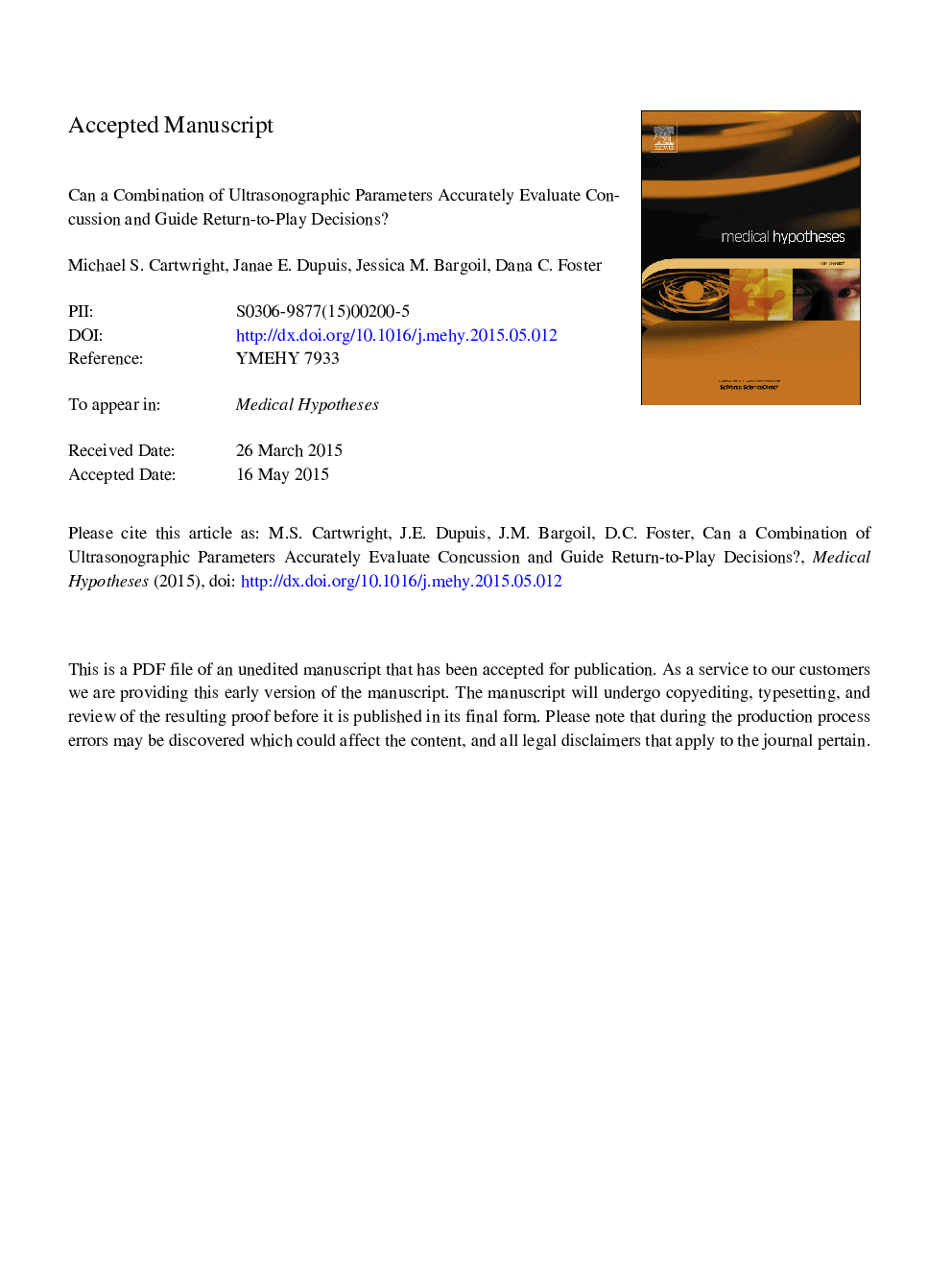| Article ID | Journal | Published Year | Pages | File Type |
|---|---|---|---|---|
| 5810946 | Medical Hypotheses | 2015 | 18 Pages |
Abstract
Mild traumatic brain injury, often referred to as concussion, is a common, potentially debilitating, and costly condition. One of the main challenges in diagnosing and managing concussion is that there is not currently an objective test to determine the presence of a concussion and to guide return-to-play decisions for athletes. Traditional neuroimaging tests, such as brain magnetic resonance imaging, are normal in concussion, and therefore diagnosis and management are guided by reported symptoms. Some athletes will under-report symptoms to accelerate their return-to-play and others will over-report symptoms out of fear of further injury or misinterpretation of underlying conditions, such as migraine headache. Therefore, an objective measure is needed to assist in several facets of concussion management. Limited data in animal and human testing indicates that intracranial pressure increases slightly and cerebrovascular reactivity (the ability of the cerebral arteries to auto-regulate in response to changes in carbon dioxide) decreases slightly following mild traumatic brain injury. We hypothesize that a combination of ultrasonographic measurements (optic nerve sheath diameter and transcranial Doppler assessment of cerebrovascular reactivity) into a single index will allow for an accurate and non-invasive measurement of intracranial pressure and cerebrovascular reactivity, and this index will be clinically relevant and useful for guiding concussion diagnosis and management. Ultrasound is an ideal modality for the evaluation of concussion because it is portable (allowing for evaluation in many settings, such as on the playing field or in a combat zone), radiation-free (making repeat scans safe), and relatively inexpensive (resulting in nearly universal availability). This paper reviews the literature supporting our hypothesis that an ultrasonographic index can assist in the diagnosis and management of concussion, and it also presents limited data regarding the initial use of this index in healthy controls.
Related Topics
Life Sciences
Biochemistry, Genetics and Molecular Biology
Developmental Biology
Authors
Michael S. Cartwright, Janae E. Dupuis, Jessica M. Bargoil, Dana C. Foster,
